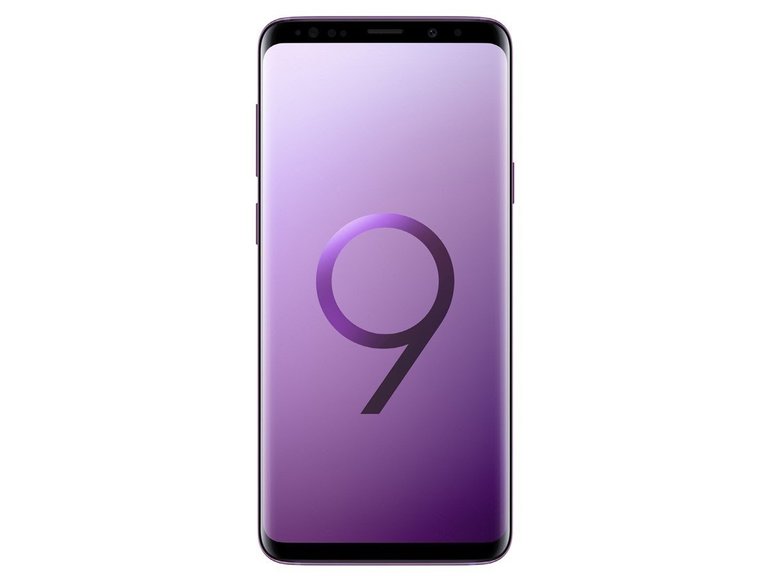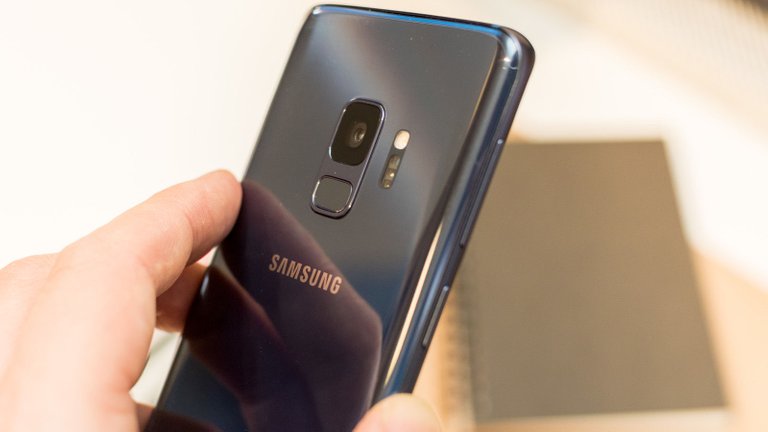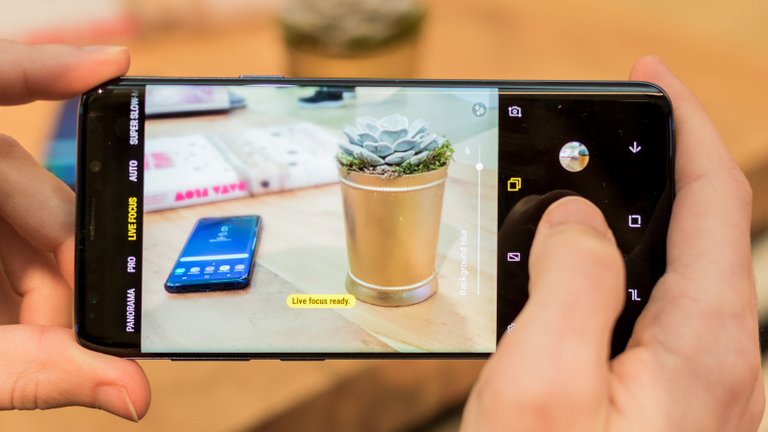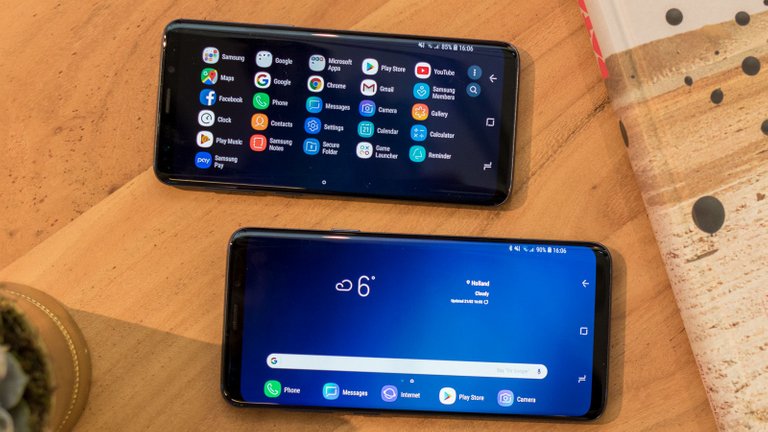
Retailer Price
Samsung £739.00
View
Price comparison from over 24,000 stores worldwide
SAMSUNG GALAXY S9 REVIEW
The first new flagship phones of 2018 are here and the Samsung Galaxy S9 is the first to hit the market. The S8 was almost a perfect phone so can Samsung really make it even better? Our review and testing shows that it can, but not by much.
With LG and Huawei failing to launch new flagship smartphones at MWC 2018, more focus is on Samsung and focus is an apt word here as the Galaxy S9 is largely about new and improved camera technology.
PRICING
As per rumours ahead of the launch, the price has increased to £739/US$719 which is £50 more than its predecessor. Ok, so it's a lot of money, but it remains a cheaper than some rivals. The iPhone 8 is cheaper at £699/$699, but is arguably only just about worth that amount and is last year's model.
We'll have to wait and see how this price compares to upcoming rivals like the LG G7 and Huawei P20. The Sony Xperia XZ2 isn't much cheaper at £699.
There will also be a global trade-in program so you can upgrade from an older Galaxy phone
DESIGN
It's immediately clear that the Galaxy S9 is very much a new version of the Galaxy S8, rather than a radically new device. Like a point upgrade in software terms if you like so this is essentially the 'Galaxy S8.1' or 'Galaxy S8s'.
With an almost identical design to its predecessor, you'd be hard pressed to notice which one is the Galaxy S9. The front has had only minor tweaks: the bezels above and below the screen are a fraction smaller. It's not that obvious, but you've got to bear in mind the S8 already had very small bezels.
The Galaxy S9 is a little shorter than the S8 and it's actually a bit thicker and heavier at 8.5mm and 163g, but neither measurements are things you'll really notice.
At the back, the change is more obvious with the fingerprint scanner moving to below the camera. Samsung clearly listened to feedback on this so not only does it look nicer, it's also much easier to reach and use. You might still smudge the camera up occasionally but it's bound to happen far less.
There's actually not much else to say about the Galaxy S9 in terms of design and build since it's so similar to last year's model. The overall look and feel is the same with a sleek combination of metal and glass. There's still a pressure sensitive home button embedded in the screen and a dedicated button on the left side for summoning Bixby.
It feels nice to hold but is a slippery phone due to the glass rear cover. The design, particularly the curved edges of the front glass make it more susceptible to cracks than a more traditional shape. Here's our round up of the best Galaxy S9 cases to keep your S9 smudge free and protected.

SPECS AND FEATURES
So Galaxy S9 isn't very different in design so is it a big jump in specs and new technology? Well not really but Samsung has made improvement to what was already a very impressive smartphone.
Screen
It may be good news to you - it is to us - that Samsung has not gone down the same route as Apple with a notch at the top of the screen. In fact, the display is one area that hasn't changed since the Galaxy S8, so it's still 5.8in on the regular model and jumps to 6.2in if you get the Galaxy S9+.
As mentioned earlier both phones have the curved Infinity Display so you only really need to choose which size you want – the S9+ does have different camera technology and a couple of other benefits, though (see below).
Samsung is sticking to its 18.5:9 aspect ratio, Quad HD+ resolution and Super AMOLED technology. It's still one of the best screens on the market and compared to our Galaxy S8, looks a little brighter, too.
As previously, you can take advantage of features like Edge screen - where you can swipe in from the side and flick through various panels of things like popular contacts, apps and more. There's also the always on feature which displays important information on the lockscreen when the phone is off.
There are plenty more smaller features, many of which have been around a long time, hidden away in the settings menu so it's worth exploring what the S9 can do - especially if this is your first Galaxy device.
Processor, memory and storage
With a new flagship comes a new processor and Samsung has fitted the Galaxy S9 with a new Exynos 8910 chip. It's still an octa-core chip with four 1.7GHz efficiency cores but the faster four have jumped from 2.4- to 2.7GHz.
Some markets will come with a Qualcomm Snapdragon 845 instead; something Samsung has done for a while in the US and China.
As you can see from the benchmark results, the Exynos outpaces the Snapdragon 845 a little bit (figures via Qualcomm's reference design), but neither can match the raw power of the iPhone's A11. We've included the OnePlus 5T so you can get an idea of the performance on offer at a much lower price.
It's important to note that performance isn't an issue here and the S9 is clearly capable of handling all you can throw at it
PRICE AND RELEASE DATE
You can buy the Galaxy S9 now although anyone who pre-ordered will have had the phone a week ahead of the 16 March release date.
See the best Samsung Galaxy S9 deals here.
As per rumours ahead of the launch, the price has increased to £739/US$719 which is £50 more than its predecessor. Ok, so it's a lot of money, but it remains a cheaper than some rivals. The iPhone 8 is cheaper at £699/$699, but is arguably only just about worth that amount and is last year's model.
We'll have to wait and see how this price compares to upcoming rivals like the LG G7 and Huawei P20. The Sony Xperia XZ2 isn't much cheaper at £699.
There will also be a global trade-in program so you can upgrade from an older Galaxy phone. You can find out more here.
Galaxy S9 and S9+

DESIGN AND BUILD
It's immediately clear that the Galaxy S9 is very much a new version of the Galaxy S8, rather than a radically new device. Like a point upgrade in software terms if you like so this is essentially the 'Galaxy S8.1' or 'Galaxy S8s'.
With an almost identical design to its predecessor, you'd be hard pressed to notice which one is the Galaxy S9. The front has had only minor tweaks: the bezels above and below the screen are a fraction smaller. It's not that obvious, but you've got to bear in mind the S8 already had very small bezels.
The Galaxy S9 is a little shorter than the S8 and it's actually a bit thicker and heavier at 8.5mm and 163g, but neither measurements are things you'll really notice.
At the back, the change is more obvious with the fingerprint scanner moving to below the camera. Samsung clearly listened to feedback on this so not only does it look nicer, it's also much easier to reach and use. You might still smudge the camera up occasionally but it's bound to happen far less.
There's actually not much else to say about the Galaxy S9 in terms of design and build since it's so similar to last year's model. The overall look and feel is the same with a sleek combination of metal and glass. There's still a pressure sensitive home button embedded in the screen and a dedicated button on the left side for summoning Bixby.
It feels nice to hold but is a slippery phone due to the glass rear cover. The design, particularly the curved edges of the front glass make it more susceptible to cracks than a more traditional shape. Here's our round up of the best Galaxy S9 cases to keep your S9 smudge free and protected.
Also see: Samsung Galaxy S8 vs Galaxy S9
Galaxy S9 ports
It's now, since the S8, standard for both models to have the display with curved edges and Samsung has made sure to retain key features like the IP68 waterproof rating and the headphone jack.
This year there are three colours to choose from: Midnight Black, Coral Blue and a new Lilac Purple. There's also a Titanium Gray option but for now this isn't available in the UK.
SPECS AND FEATURES
So Galaxy S9 isn't very different in design so is it a big jump in specs and new technology? Well not really but Samsung has made improvement to what was already a very impressive smartphone.
Screen
It may be good news to you - it is to us - that Samsung has not gone down the same route as Apple with a notch at the top of the screen. In fact, the display is one area that hasn't changed since the Galaxy S8, so it's still 5.8in on the regular model and jumps to 6.2in if you get the Galaxy S9+.
As mentioned earlier both phones have the curved Infinity Display so you only really need to choose which size you want – the S9+ does have different camera technology and a couple of other benefits, though (see below).
Samsung is sticking to its 18.5:9 aspect ratio, Quad HD+ resolution and Super AMOLED technology. It's still one of the best screens on the market and compared to our Galaxy S8, looks a little brighter, too.
See our list of best Galaxy S9 screen protectors.
As previously, you can take advantage of features like Edge screen - where you can swipe in from the side and flick through various panels of things like popular contacts, apps and more. There's also the always on feature which displays important information on the lockscreen when the phone is off.
Trending Articles
2018 MacBook Air Release Date, Price and Specification rumours
The MacBook Air hasn’t been updated for three years now, but rumours abound that Apple is about to announce a new model for 2018. We’ve rounded up…
Powered By
There are plenty more smaller features, many of which have been around a long time, hidden away in the settings menu so it's worth exploring what the S9 can do - especially if this is your first Galaxy device.
Galaxy S9 screen
Processor, memory and storage
With a new flagship comes a new processor and Samsung has fitted the Galaxy S9 with a new Exynos 8910 chip. It's still an octa-core chip with four 1.7GHz efficiency cores but the faster four have jumped from 2.4- to 2.7GHz.
Some markets will come with a Qualcomm Snapdragon 845 instead; something Samsung has done for a while in the US and China.
As you can see from the benchmark results, the Exynos outpaces the Snapdragon 845 a little bit (figures via Qualcomm's reference design), but neither can match the raw power of the iPhone's A11. We've included the OnePlus 5T so you can get an idea of the performance on offer at a much lower price.
It's important to note that performance isn't an issue here and the S9 is clearly capable of handling all you can throw at it.
Like the Galaxy S8, you get 4GB of RAM and 64GB of internal storage and although you can find more elsewhere (even in cheaper phones like the OnePlus 5T) it should be enough for most people. If it's not enough storage then there's a 256GB option and a microSD card slot which can now take up to 400GB.
If you are more of a power user, then the S9+ has 6GB of RAM and double the amount of storage as standard.
Connectivity and Audio
There's not much Samsung or other manufacturers can do to improve connectivity on a 2018 flagship smartphone. Like the S8, the Galaxy S9 has all the things you'd expect including 11ac dual-band Wi-Fi, Bluetooth 5.0, NFC, GPS, USB-C and a headphone port.
Unlike most, Samsung continues to offer heart rate monitor. The S9 can reach 4G speeds of 1.2Gbps which is impressive, but in real life you're not going to see that kind of grunt.
There's no Quad DAC for better headphone audio like the LG V30, but Samsung has improved the speakers on the S9. There are now stereo speakers with the usual down firing one on the bottom and now one where the earpiece is above the screen.
It's the same setup Apple uses for recent iPhones, and also one Sony has adopted with the XZ2.
It might sound a little odd with both firing in different directions but we'll take it over a mono speaker any day. There's still tuning from AKG and this time Samsung has also added Dolby Atmos which you can toggle for a bigger, more spacious soundscape.
There's a noticable improvement compared to the S8, particularly in the on-board speakers. They've got a lot more power but aren't flawless with the audio quality getting a bit rough at higher volumes. We do like the optional Dolby Atmos mode, which can make content a lot more immersive - especially video.
It's worth noting that the supplied AKG headphones are once again very good, so most users won't be rushing out to find a replacement pair.

Fingerprint and Iris scanners
As mentioned earlier the fingerprint scanner has been moved to a more convenient location below the camera. It's also easier to register each new finger according to Samsung with only three swipes rather than many more touches needed previously.
We actually managed to register two fingers in just two swipes each. The fingerprint scanner is quick (not the fastest around but plenty fast enough) and accurate and can now be used to pull the notification panel down - just switch it on in the settings.
We'd rather the Galaxy S9 had the fingerprint scanner embedded in the screen as the tech is out there but it seems we'll have to wait for that.
Samsung hasn't explicitly said the iris scanner is better than before which is a shame but it keen to point out that it's embedded in the front of the phone without a notch like the iPhone X. There's also a new Intelligent Scan option which combines iris and facial scanning.
One thing is for sure, there's a dramatic improvement over previous iterations. Generally it works quite well, but it's not as consistent compared to rival phones just doing face unlock. Even switching to just facial scanning it's not as good as phones like the iPhone X and OnePlus 5T.
Cameras
The biggest change on the Galaxy S9 comes in the camera tech, as teased by Samsung before the launch with its 'The Camera. Reimagined' campaign.
Sadly it's the Galaxy S9 that's not as impressive as you'll have to get the S9+ to get a dual-camera setup. We'd like to see dual-cameras as standard on both phones but it's understandable that Samsung wants more than just size to differentiate the two.
Still, the S9's camera is improved from before even though it remains at 12Mp with 1.4µm pixels and OIS. The main upgrade is an adjustable aperture that can automatically switch between f/2.4 and f/1.5 depending on the shooting conditions - the fastest of any phone on the market.
The iris is mechanical like DSLR camera and should mean better results in both daylight and low light. What Samsung calls the 'Super Speed Dual Pixel' package now has DRAM so it can do things faster and more intelligently. The camera now takes 12 shots together instead of 3 to improve noise by 30 percent.
DxO has awarded the Galaxy S9+ a score of 99 for the camera, the highest of a phone to date. The regular model might not have the telephoto lens but it's still excellent on its own.
Check out out gallery below where you can see how the S9 coped in a range of different conditions. The phone might not be doing the same level of clever software processing that makes images look great on the Pixel 2 phones but it's still very impressive.
Overall, the S9 has a camera that can achieve excellent results in all conditions partly thanks to that dual aperture. You get crisp shots in decent light - although some can be a little washed out like our shot of St.Pancras -, stunning detail in macro and most noteworthy is how well the S9 copes in low light, without excessive levels of noise.
In the gallery you'll see an extreme low light shot, which if taken on other phones is essentially a blackout. There's no doubt that the S9 offers a fantastic all-round photography experience.

BATTERY LIFE
Battery life
It's a shame the battery remains at 3,000mAh and Samsung has not made any claims on the subject. The Galaxy S9 will offer fast charging via the USB-C port and with wireless charging, though.
With the supplied charger, we managed to charge the S9 from 0 to 36 percent in 30 minutes. That's pretty good, although the HTC U11+ beats it slightly at 38 percent.
With no change in battery capacity, it's no surprise that the phone isn't going to last you any longer than before. The S9 will last a day of average usage and perhaps a little bit longer for light users. Fast wired and wireless charging will help you keep it topped up.

APPS AND SOFTWARE
As you would expect, the Galaxy S9 phones come with Android 8 Oreo and Samsung own user interface. There's not a huge change in the way things work compared to previously but that's to be expected.
There are still pre-loaded apps from Google and Microsoft, but Samsung has made a few tweaks here and there to tighten up the experience.
For those using various different Samsung apps for other devices, you'll be pleased to know that there's now one app to rule them all. SmartThings is now the one place where you can manage all your devices and it will also do useful things like provide your new Samsung TV, for example, with the Wi-Fi details and logins to all your services.
Galaxy S9 DeX dock
As mentioned already, there are improvements to Bixby (which still has a dedicated button on the side of the phone.
One of the main changes is that you can now use the phone in landscape mode, whether you're browsing the homescreen panels or your apps. When you are, notifications will pop up at the top but in an unintrusive way.
Hi! I am a robot. I just upvoted you! I found similar content that readers might be interested in:
https://infispec.wordpress.com/2018/03/03/samsung-galaxy-s9-s9-review/